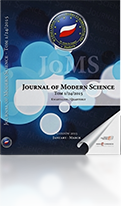Porównanie poziomów rozwoju pojęć geometrycznych u uczniów Hejnego z poziomami van Hielów
A comparison of Hejný levels of the development of student’s geometric thinking with the van Hiele levels
Author(s): Zbigniew SemadeniSubject(s): Sociology
Published by: Wydawnictwo Wyższej Szkoły Gospodarki Euroregionalnej im. Alcide De Gasperi w Józefowie
Keywords: shapes; Hejný levels; van Hiele levels; visual perception; deduction; preconceptual level; ontogeny vs. phylogeny
Summary/Abstract: The paper begins with a short description of phenomenological ideas of Petr Vopěnka concerning the development of children’s geometric concepts and his notion of personality of a phenomen, which makes the phenomenon an individual entity.Milan Hejný’s approach to the problem (inspired by Vopěnka’s ideas) concerns three levels of understanding the world of geometry by the child: (I) the level of isolated models (or preconceptual); (II) the level of personality objects, where a crucial role in the child’s thinking is played by portraits of basic shapes, serving as universal models;(III) the level of society objects. The question of pertinence of the label preconceptualis discussed. Then the theory of five levels of the development of geometric thinking, created by Dieke van Hiele-Geldof and Pierre van Hiele, is analyzed. The levels are: (I)visual level (or recognition level) – the students’ thinking is based on visual (gestalt)grasping of the shape (of a square, rectangle etc.), without identifying their properties(e.g., they claim that a square rotated by 45° is not a square, some may use the termdiamond); (II) descriptive level (or analysis level) – the student can speak about properties characterizing a shape; (III) abstraction level – the student understands that some properties are consequences of other properties; (IV) deduction level(from axioms); (V) rigor level, formal deduction. The theory is also analyzed in the context of ontogeny (the development of geometrical thinking of an individual child)and phylogeny (the historical development of geometric concepts, from Tales to 20th century).
Journal: Journal of Modern Science
- Issue Year: 37/2018
- Issue No: 2
- Page Range: 45-68
- Page Count: 24
- Language: Polish

